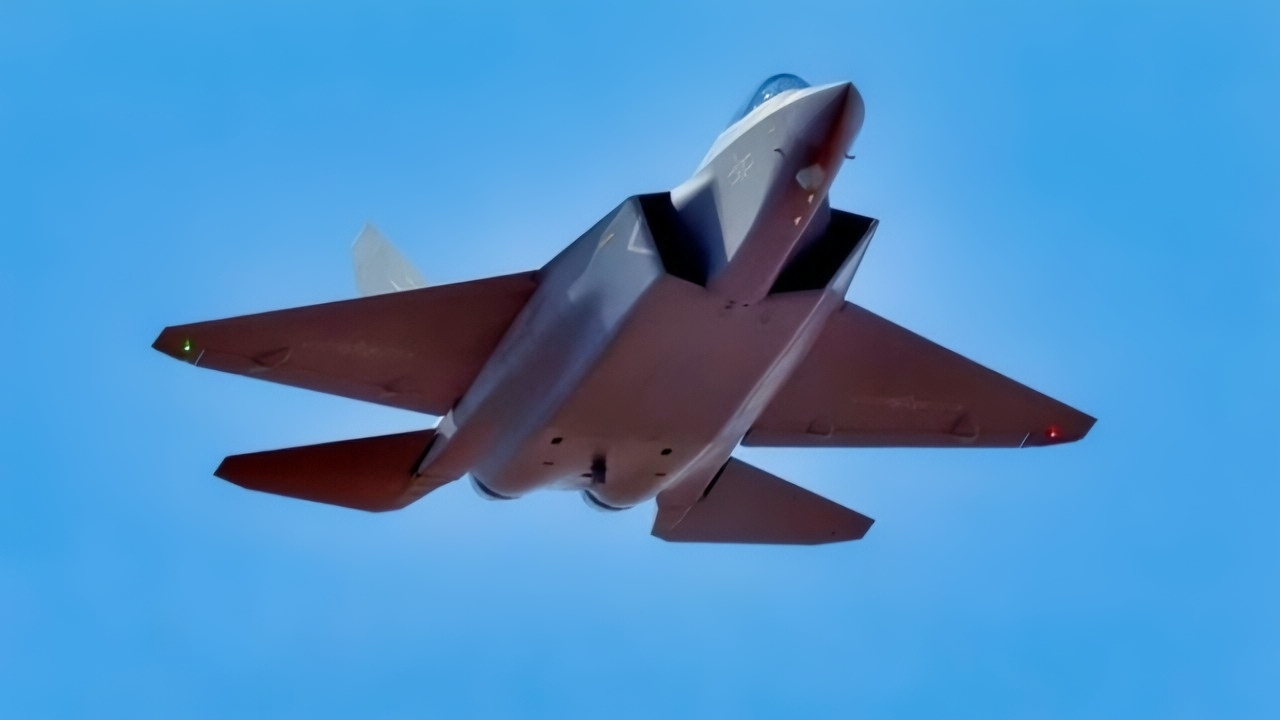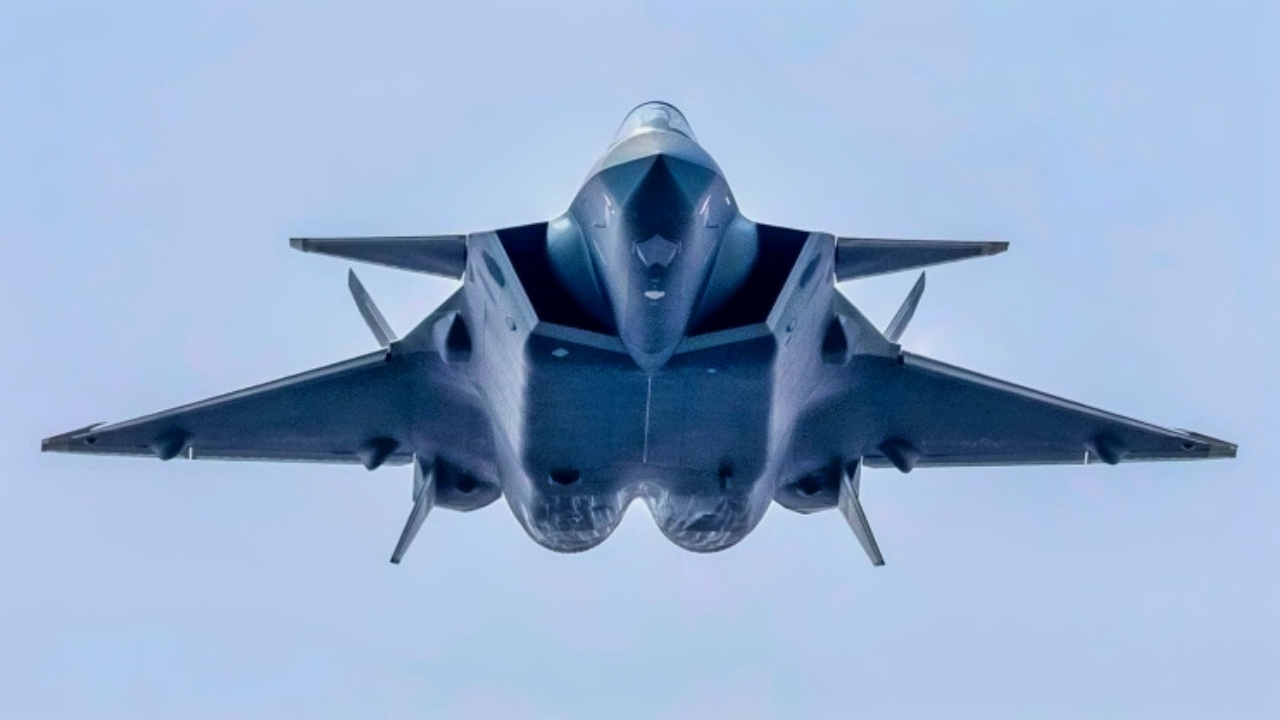Key Points and Summary – China’s J-35, its second 5th-generation stealth fighter, has reportedly entered service with both the air force and navy.
-Evolved from the FC-31 prototype, the J-35 is a carrier-capable, multi-role aircraft designed to rival the F-35.

J-35 Fighter from China. Image Credit: PLAAF.

J-35 New Stealth Fighter from China
-It features internal weapons bays for stealth, carrying munitions like the long-range PL-15 missile, and has a total payload capacity of 18,000 lbs.
-Its integration with the new Fujian carrier’s electromagnetic catapults marks a significant advancement for Chinese naval aviation and its power projection capabilities.
Here Comes China’s J-35 Stealth Fighter
The Shenyang J-35 is China’s newest fifth-generation stealth aircraft, which has recently been accepted into service with the PLA and PLAN.
The fighter is designed to serve as a carrier-capable multirole strike fighter for the Chinese Navy and is intended for export to other nations.
Like every other stealth fighter, the J-35 houses most of its ordnance inside an internal weapons bay to preserve its stealth profile.
The aircraft is capable of carrying a wide range of armaments from air-to-air missiles to guided air-to-ground munitions.
Armaments and Munitions
Like other fifth-generation fighters, the J-35 is designed to carry weapons internally to preserve its stealth profile.

J-20 Fighter Screenshot from X. Image Credit: X.

China’s J-20 Fighter. Image Credit: Creative Commons.
It features two internal weapons bays, each capable of housing two air-to-air missiles. In addition to these internal bays, the aircraft has external hardpoints that can carry additional ordnance when stealth is not a priority, such as in low-threat environments or during peacetime operations.
In total, the J-35 is capable of carrying an estimated weight of around 18,000 lb (8,000 kilograms) of munitions using internal and external storage.
The J-35 is expected to carry a range of advanced air-to-air missiles. For short-range engagements, it will likely be equipped with the PL-10, an infrared-guided missile with high off-boresight capability and compatibility with helmet-mounted cueing systems.
The PL-10 is comparable to the American AIM-9X Sidewinder and is designed for close-range dogfighting. For beyond-visual-range (BVR) combat, the J-35 is expected to carry the PL-15, a long-range, active radar-guided missile with an estimated range of 200 to 300 kilometers.
The PL-15 features an active electronically scanned array (AESA) radar seeker and is designed to engage enemy aircraft at extended distances, making it a key component of China’s air superiority strategy. There is also speculation that the J-35 may eventually carry the PL-21, a developmental missile with even greater range, although details about this system remain limited.
China’s Multi-Role Stealth Fighter
The J-35’s armament complements its diverse role and is a versatile strike platform. In addition to its air-to-air capabilities, the aircraft is designed to perform precision-strike missions with a variety of air-to-ground munitions.
These include satellite-guided bombs similar to the American JDAM, laser-guided bombs for precision targeting, and air-to-surface missiles such as the YJ-series or KD-series.
The aircraft may also be equipped with anti-radiation missiles for suppression of enemy air defenses (SEAD) missions. These weapons can be carried internally for stealth operations or externally when stealth is not required.

J-20 Fighters from China. Image Credit: Creative Commons.
The J-35 is also expected to feature a sophisticated suite of avionics and sensors. It is likely equipped with an AESA radar for long-range detection and tracking, an electro-optical targeting system (EOTS) for precision targeting, and an infrared search and track (IRST) system for passive detection of enemy aircraft.
A helmet-mounted display (HMD) will provide the pilot with enhanced situational awareness and allow for rapid targeting of weapons.
The aircraft will also be integrated into China’s network-centric warfare systems, with data links that enable coordination with other platforms such as the J-20 stealth fighter and KJ-500 airborne early warning and control (AEW&C) aircraft.
Design and Development
The origins of the J-35 can be traced back to the FC-31 Gyrfalcon, a prototype stealth fighter that first flew in 2012 and was publicly revealed in 2014. Initially developed as a private venture by SAC, the FC-31 was intended for the export market and was not immediately adopted by the Chinese military.
However, the design was later refined and militarized, leading to the development of the J-35, which has since been adapted for both land-based and carrier-based operations. The land-based version currently serves the PLAAF, while the naval variant is being integrated aboard China’s new generation type 003 Fujian-class aircraft carrier.
In terms of design, the J-35 incorporates many features typical of fifth-generation fighters. It has a stealth-optimized airframe with angular surfaces, canted vertical stabilizers, and diverterless supersonic inlets (DSI) that reduce radar cross-section.
The aircraft is powered by two WS-19 or WS-21 turbofan engines, which are expected to provide sufficient thrust for supercruise and high maneuverability.
The J-35 is estimated to be around 17 meters in length, with a wingspan of approximately 11.5 meters and a height of about 4.8 meters. Its maximum speed is believed to be around Mach 1.8, with a combat radius of roughly 1,200 kilometers and a service ceiling of about 55,000 feet.
China’s Navy Now Has Stealth Fighters
The naval variant of the J-35 is being developed specifically for operations from China’s aircraft carriers.
This version features folding wings for easier storage aboard ships, reinforced landing gear for carrier landings, and an arrestor hook for recovery.
It is also designed to be compatible with electromagnetic aircraft launch systems (EMALS), which are being installed on the Type 003 Fujian-class carriers.
This makes the J-35 the first Chinese stealth fighter capable of electromagnetic catapult launches, a significant advancement in carrier aviation.
The J-35 is expected to complement the J-20 in China’s airpower doctrine.
While the J-20 is optimized for long-range interception and air dominance, the J-35 is more versatile, capable of performing both air-to-air and air-to-ground missions from land bases and aircraft carriers.
This flexibility makes it a valuable asset for both the PLAAF and PLANAF, particularly in scenarios involving power projection and regional deterrence.
About the Author: Isaac Seitz
Isaac Seitz, a Defense Columnist, graduated from Patrick Henry College’s Strategic Intelligence and National Security program. He has also studied Russian at Middlebury Language Schools and has worked as an intelligence Analyst in the private sector.
More Military
How an F-16 Fighter Barely Dodged 6 Surface-to-Air Missiles
The Mach 2.15 F-111 Aardvark Has a Message for the U.S. Air Force
The U.S. Army’s Bradley Fighting Vehicle Has a Message for Any Military On Earth
The U.S. Navy’s Great Missile Shortage
The F-14 Tomcat U.S. Navy Fighter Has A Message for Any Military On Earth










